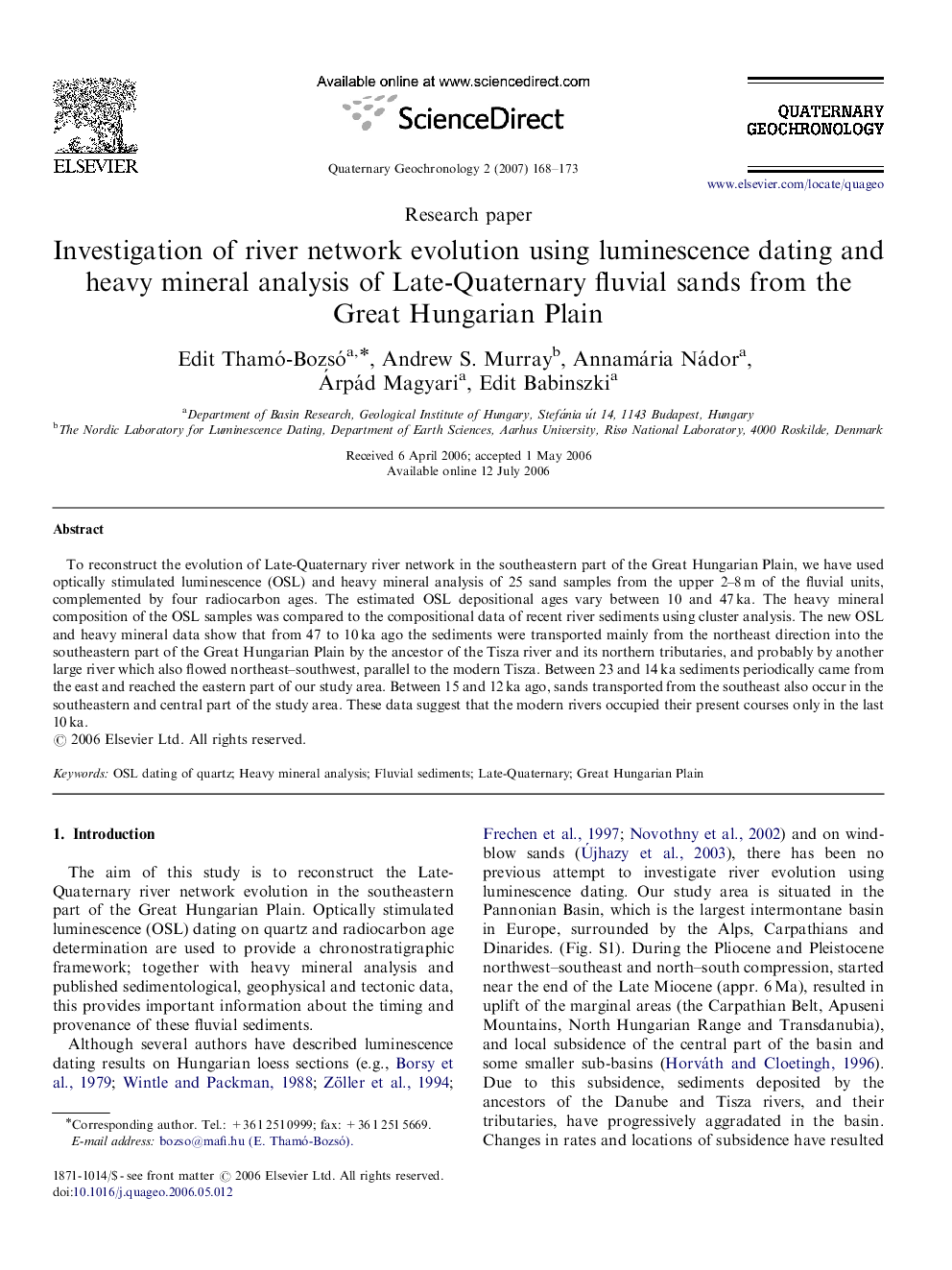| Article ID | Journal | Published Year | Pages | File Type |
|---|---|---|---|---|
| 4725399 | Quaternary Geochronology | 2007 | 6 Pages |
Abstract
To reconstruct the evolution of Late-Quaternary river network in the southeastern part of the Great Hungarian Plain, we have used optically stimulated luminescence (OSL) and heavy mineral analysis of 25 sand samples from the upper 2-8Â m of the fluvial units, complemented by four radiocarbon ages. The estimated OSL depositional ages vary between 10 and 47Â ka. The heavy mineral composition of the OSL samples was compared to the compositional data of recent river sediments using cluster analysis. The new OSL and heavy mineral data show that from 47 to 10Â ka ago the sediments were transported mainly from the northeast direction into the southeastern part of the Great Hungarian Plain by the ancestor of the Tisza river and its northern tributaries, and probably by another large river which also flowed northeast-southwest, parallel to the modern Tisza. Between 23 and 14Â ka sediments periodically came from the east and reached the eastern part of our study area. Between 15 and 12Â ka ago, sands transported from the southeast also occur in the southeastern and central part of the study area. These data suggest that the modern rivers occupied their present courses only in the last 10Â ka.
Related Topics
Physical Sciences and Engineering
Earth and Planetary Sciences
Geochemistry and Petrology
Authors
Edit Thamó-Bozsó, Andrew S. Murray, Annamária Nádor, Árpád Magyari, Edit Babinszki,
